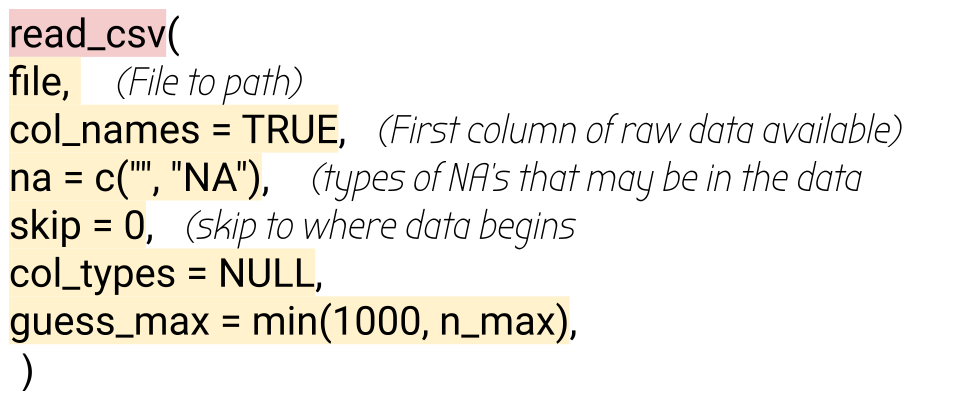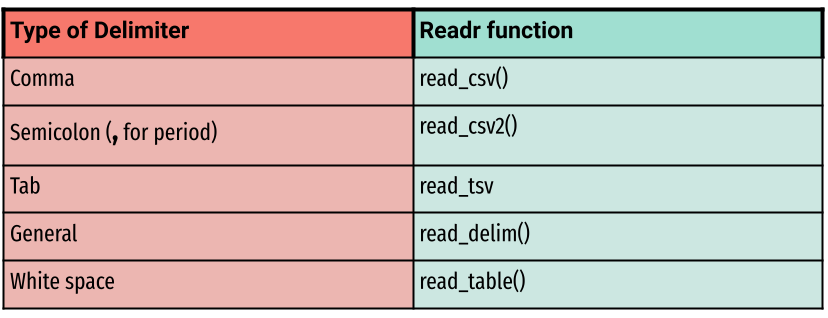Prepare and Wrangle
Foundations Module 1: A Code-A-long
Welcome to Foundations code along for Module 1
Foundations of Learning Analyticsare designed for those seeking an introductory understanding of learning analytics and either basic R programming skills or basic Python skills, particularly in the context of STEM education research. The following code along is aimed at preparing you for the first section of the case study.

Module Objectives
By the end of this module:
- Know how to read in the data:
- Learners will be able to identify and describe different types of learning environments, explaining their unique features and applications in educational research.
- Characteristics of
Data:- Learners will gain proficiency in recognizing and categorizing various data formats commonly used in educational research by the end of this section.
Context of the Problem
Macfadyen, L. P., & Dawson, S. (2010). Mining LMS data to develop an “early warning system” for educators: A proof of concept. Computers & education, 54(2), 588-599.
- Explores specific online activities of students indicating their academic success.
- Focused on “early warning systems” in higher education.
- Research was extracted from course-based instructor tracking logs and the BB Vista production server.
- Data Sources
- A self-report survey assessing three aspects of students’ motivation
- Log-trace data, such as data output from the learning management system (LMS)
- Academic achievement data
- Discussion board data
Research Questions:
Which LMS tracking data variables correlate significantly with student achievement?
How accurately can measures of student online activity in an online course site predict student achievement in the course under study?
Loading and Installing packages
Load Pacakges
- First time using a package
- Do this ONLY ONCE in the “console”
Load Pacakges
👉 Your Turn ⤵ -> Answer
Reading in data
Function
Common {readr} functions to read in different types of data


Using the readr function
Using the readr function
- Use
read_csv()function to read in CSV.
Your turn 👉 Your Turn ⤵
In the corresponding script do the following:
- load in the
readxlpackage, - load in
"data/csss_tweets.xlsx"file save to a new object csss_tweets - inspect the data by
head()function
👉 Your Turn ⤵ -> Answer
#Install and read in the readxl Package
library(readxl)
#use read_excel() function to read in data/csss_tweets.xlsx
csss_tweets <- read_excel("data/csss_tweets.xlsx")#<<
#use head() function to read
head(csss_tweets, n = 5)# A tibble: 5 × 91
user_id status_id created_at screen_name text source
<chr> <chr> <dttm> <chr> <chr> <chr>
1 1331246991762976769 136572200862… 2021-02-27 17:54:35 InnerSchol… "@We… Twitt…
2 1331246991762976769 136572187371… 2021-02-27 17:54:03 InnerSchol… "@Bo… Twitt…
3 1331246991762976769 136572178780… 2021-02-27 17:53:42 InnerSchol… "@Co… Twitt…
4 1331246991762976769 136572174606… 2021-02-27 17:53:32 InnerSchol… "@Co… Twitt…
5 1331246991762976769 136572164488… 2021-02-27 17:53:08 InnerSchol… "Ano… Twitt…
# ℹ 85 more variables: display_text_width <dbl>, reply_to_status_id <chr>,
# reply_to_user_id <chr>, reply_to_screen_name <chr>, is_quote <lgl>,
# is_retweet <lgl>, favorite_count <dbl>, retweet_count <dbl>,
# quote_count <lgl>, reply_count <lgl>, hashtags <lgl>, symbols <lgl>,
# urls_url <lgl>, urls_t.co <lgl>, urls_expanded_url <lgl>, media_url <lgl>,
# media_t.co <lgl>, media_expanded_url <lgl>, media_type <lgl>,
# ext_media_url <lgl>, ext_media_t.co <lgl>, ext_media_expanded_url <lgl>, …What did you notice in the printed output?
import Excel Sheet
[1] "Sheet1"csss_tweets <- read_excel("data/csss_tweets.xlsx", sheet = "Sheet1")
#use head() function to read
head(csss_tweets, n = 5)# A tibble: 5 × 91
user_id status_id created_at screen_name text source
<chr> <chr> <dttm> <chr> <chr> <chr>
1 1331246991762976769 136572200862… 2021-02-27 17:54:35 InnerSchol… "@We… Twitt…
2 1331246991762976769 136572187371… 2021-02-27 17:54:03 InnerSchol… "@Bo… Twitt…
3 1331246991762976769 136572178780… 2021-02-27 17:53:42 InnerSchol… "@Co… Twitt…
4 1331246991762976769 136572174606… 2021-02-27 17:53:32 InnerSchol… "@Co… Twitt…
5 1331246991762976769 136572164488… 2021-02-27 17:53:08 InnerSchol… "Ano… Twitt…
# ℹ 85 more variables: display_text_width <dbl>, reply_to_status_id <chr>,
# reply_to_user_id <chr>, reply_to_screen_name <chr>, is_quote <lgl>,
# is_retweet <lgl>, favorite_count <dbl>, retweet_count <dbl>,
# quote_count <lgl>, reply_count <lgl>, hashtags <lgl>, symbols <lgl>,
# urls_url <lgl>, urls_t.co <lgl>, urls_expanded_url <lgl>, media_url <lgl>,
# media_t.co <lgl>, media_expanded_url <lgl>, media_type <lgl>,
# ext_media_url <lgl>, ext_media_t.co <lgl>, ext_media_expanded_url <lgl>, …Hint: To learn more about functions for this package type:
?read_excel in the script.
👉 Your Turn ⤵
- Do the following:
- load in the
havenpackage, - load in “data/GPA3.dta” file save to a new object called gpa_dt
- inspect the data with function of your choice
- explain what you see
👉 Your Turn ⤵
- Do the following:
- load in the
havenpackage, - load in “data/GPA3.dta” file save to a new object called gpa_dt
- inspect the data with function of your choice
- explain what you see
👉 Your Turn ⤵ -> Answer
# 1. Install and read in the haven function
library(haven)
# 2. use read_dta() function to read in data/GPA3.dta
gpa_dt <- read_dta("data/GPA3.dta")
# 3. Inspect the data
head(gpa_dt, n=3)# A tibble: 3 × 23
term sat tothrs cumgpa season frstsem crsgpa verbmath trmgpa hssize hsrank
<dbl> <dbl> <dbl> <dbl> <dbl> <dbl> <dbl> <dbl> <dbl> <dbl> <dbl>
1 1 920 31 2.25 0 0 2.65 0.484 1.5 10 4
2 2 920 43 2.04 1 0 2.51 0.484 2.25 10 4
3 1 780 28 2.03 0 0 2.87 0.814 2.20 123 102
# ℹ 12 more variables: id <dbl>, spring <dbl>, female <dbl>, black <dbl>,
# white <dbl>, ctrmgpa <dbl>, ctothrs <dbl>, ccrsgpa <dbl>, ccrspop <dbl>,
# cseason <dbl>, hsperc <dbl>, football <dbl>Joins Overview
Let’s create Mock Data Generation
# Left join: Returns all rows from the left table, and the matched rows from the right table. If there is no match, the result is NA.
left_join_result <- left_join(students, scores, by = "student_id")
left_join_result student_id name major score
1 1 Alice Math 85
2 2 Bob Physics 90
3 3 Charlie Biology 75
4 4 David Computer Science NA# Right join: Returns all rows from the right table, and the matched rows from the left table. If there is no match, the result is NA.
right_join_result <- right_join(students, scores, by = "student_id")
right_join_result student_id name major score
1 1 Alice Math 85
2 2 Bob Physics 90
3 3 Charlie Biology 75
4 5 <NA> <NA> 80
❓ Why might you choose to use an inner join instead of a left join when analyzing student data alongside their scores and grades?
Full join
# Full join: Returns all rows when there is a match in one of the tables. If there is no match, the result is NA for the missing values.
full_join_result <- full_join(students, scores, by = "student_id")
full_join_result student_id name major score
1 1 Alice Math 85
2 2 Bob Physics 90
3 3 Charlie Biology 75
4 4 David Computer Science NA
5 5 <NA> <NA> 80What’s next?
- Complete the
PrepareandWrangleparts of the Case Study. - Complete the Badge requirement document Foundations badge - Data Sources
- Do required readings for the next Foundations Module 2.
